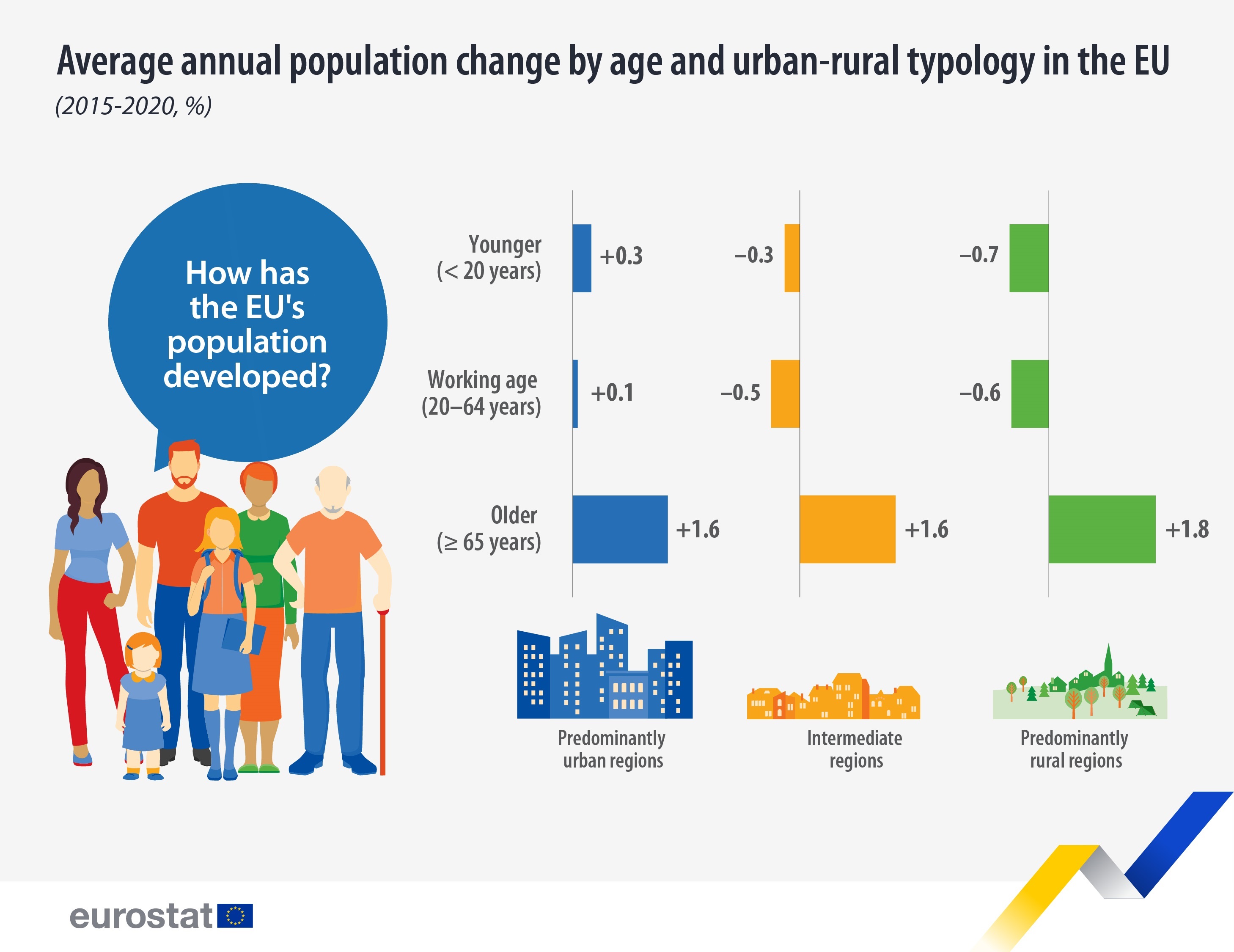Based on the urban–rural typology, predominantly rural regions accounted for almost half (45%) of the EU’s area in 2021. However, according to population data on 1 January 2021, only 21% of the EU population lived in rural regions. Over the period 2015-2020, the population of predominantly rural regions fell, on average, 0.1% each year, while almost no change was recorded in the population of intermediate regions. On the other hand, the population of predominantly urban regions rose, on average, 0.4% each year.
This information comes from the publications on Rural Europe and Urban Europe published by Eurostat.

Over the period 2015-2020, the number of older people was growing rapidly. The number of people aged 65 years or over increased by 1.6% each year in predominantly urban regions and in intermediate regions. However, the most rapid growth among this group was recorded for those living in predominantly rural regions (1.8% each year).
By contrast, the number of working-age people (20-64 years old) living in predominantly rural regions fell, on average, 0.6% each year. The number of younger people (less than 20 years old) fell by a slightly larger margin (-0.7% each year). These same two groups experienced growth in predominantly urban regions (0.1% and 0.3% each year, respectively), suggesting that these people left predominantly rural regions to continue their education or in search for work.
Population changes in the EU’s predominantly rural regions
Over the last few years (2015–2020), the population rose at a relatively fast pace (at least 0.3% per year) in 108 predominantly rural regions of the EU. By contrast, the number of people fell at a relatively fast pace (less than -0.3% per year) in 155 predominantly rural regions.
Over the period 2015–2020, the rural regions with the highest rates of depopulation were the Croatian regions of Vukovarsko-srijemska županija (-2.5% per year) and Požeško-slavonska županija (-2.3%), and the Bulgarian region of Vidin (also -2.3%).
The rural regions with the highest population growth rates were the Greek island regions of Ikaria, Samos (2.8% per year) and Lesvos, Limnos (2.7%), followed by the German region of Landshut, Kreisfreie Stadt and the island region in Canarias Spain, El Hierro (both 1.3%).



